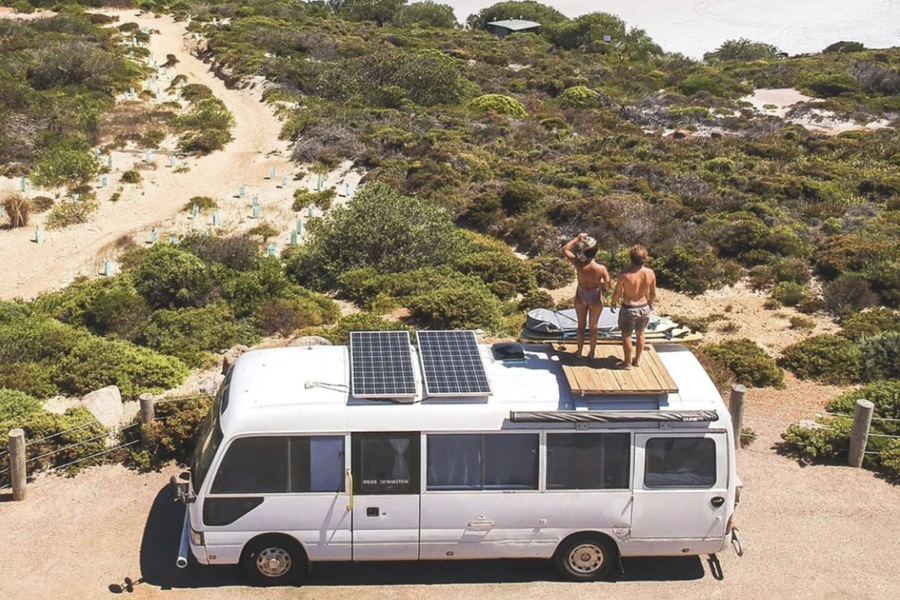Group travel has undergone significant changes over the years, particularly in Australia, where the landscape and travel preferences have shifted towards more flexible and efficient options. Traditional buses, once the default choice for group tours and travel, are being increasingly replaced by van rentals, a trend that reflects broader shifts in consumer expectations, transportation demands, and the nature of travel itself. This article explores how vans are transforming group travel in Australia, analyzing the factors driving this change and its implications for the future of group transportation.
- The Shift Towards Smaller, More Flexible Vehicles
The primary reason for the shift from traditional buses to vans is the increasing demand for flexible and tailored travel experiences. Buses are typically designed to accommodate larger groups and are often limited in terms of where they can go due to their size and turning radius. In contrast, vans offer the ability to navigate tighter spaces and access remote locations, making them ideal for groups seeking to explore Australia’s diverse landscapes. Whether it’s winding through the Great Ocean Road or venturing into off-the-beaten-path destinations like the Blue Mountains, van rentals provide a more versatile and agile solution.
- Cost-Effectiveness and Accessibility
For many groups, the cost of renting a traditional bus, which includes additional expenses such as driver fees, fuel costs, and parking, can be prohibitive. Vans, on the other hand, are typically more affordable and accessible. A report by the Australian Bureau of Statistics shows that small group travel has seen a 20% increase in demand in the past five years, largely due to the affordability and convenience offered by van rentals. Additionally, with more rental companies offering competitive pricing and flexible packages, vans have become the preferred choice for cost-conscious travelers.
- Environmental Impact and Sustainability
Sustainability has become a major consideration for travelers and the travel industry alike. Vans are generally more fuel-efficient than traditional buses, leading to a smaller carbon footprint. With Australia’s focus on promoting sustainable tourism, many rental companies are introducing hybrid and electric vans to their fleets. This shift aligns with the Australian Government’s Green Vehicle Guide, which encourages the use of fuel-efficient and low-emission vehicles. Choosing a van over a bus for group travel not only reduces environmental impact but also appeals to environmentally conscious travelers looking to minimize their carbon footprint.
- Enhanced Comfort and Amenities
Vans offer a more personalized and comfortable experience for travelers compared to traditional buses. Modern vans are equipped with features such as ergonomic seating, advanced climate control, and built-in entertainment systems, catering to the specific needs of smaller groups. This focus on comfort is particularly relevant in Australia, where long drives are a common aspect of travel. From exploring Tasmania’s rugged terrain to taking a multi-day trip along the Nullarbor Plain, the added comfort of vans makes the journey more enjoyable. Additionally, some vans offer configurations that allow for more luggage space, which is a key consideration for groups traveling with sports equipment or camping gear.

- The Role of Technology in Transforming Group Travel
The rise of technology has also played a crucial role in the transition from buses to vans. Features such as GPS navigation, real-time traffic updates, and mobile apps for managing bookings have made van rental easier and more appealing. In Australia, where connectivity is often a concern in remote areas, these technological enhancements are invaluable for ensuring safety and convenience. Rental companies have also integrated technology into their customer service, providing instant support and streamlined processes for booking, pickup, and drop-off. This tech-driven approach has made van rentals more accessible and user-friendly for a broader audience.
- Catering to Diverse Travel Needs
Traditional buses often lack the flexibility to cater to specific group requirements, such as traveling with pets, transporting delicate equipment, or accommodating unique seating arrangements. Vans, with their customizable configurations, are better suited to meet these diverse needs. For instance, groups involved in adventure tourism, such as diving in the Great Barrier Reef or hiking in the Grampians National Park, require vehicles that can accommodate bulky gear. Vans provide the necessary space and adaptability, making them a preferred choice for niche travel segments. This ability to cater to specific needs has made van rentals increasingly popular for specialized group travel in Australia.
- The Impact of Group Size and Travel Dynamics
Group size has a significant influence on vehicle choice. While traditional buses are ideal for larger groups, vans are more suitable for smaller, cohesive groups such as families, friends, or corporate teams. With vans accommodating up to 12 passengers, they are perfect for mid-sized groups that prioritize privacy and a more intimate travel experience. In cities like Sydney and Melbourne, where traffic congestion and parking are major concerns, vans offer a practical solution for navigating urban landscapes. This trend is particularly evident in Australia’s corporate travel sector, where businesses are opting for van rentals for team-building activities and off-site meetings.
- The Role of Van Rentals in Promoting Regional Tourism
The rise of van rentals has also contributed to the growth of regional tourism in Australia. Vans provide an accessible means for groups to venture beyond the typical tourist hotspots and explore lesser-known regions. Whether it’s visiting the vineyards of the Barossa Valley or embarking on a cultural tour of the Kimberley region, vans enable travelers to reach destinations that are often inaccessible by larger vehicles. This expansion into regional areas supports local economies and promotes a more sustainable model of tourism by distributing visitor numbers more evenly across the country.
- Safety Considerations for Group Travel in Vans
Safety is a top priority for group travel, and vans offer several advantages in this regard. Vans are generally easier to maneuver than buses, reducing the risk of accidents on narrow or winding roads. Additionally, modern vans are equipped with advanced safety features such as collision avoidance systems, lane-keeping assist, and blind-spot monitoring. In Australia, where road conditions can vary significantly, these features provide an added layer of security. Furthermore, rental companies often provide detailed guidelines and safety briefings, ensuring that group leaders are well-prepared to handle the vehicle in different environments.
- The Future of Group Travel: Vans as the New Standard
The trend of choosing vans over traditional buses for group travel in Australia is likely to continue, driven by the need for flexibility, affordability, and sustainability. As rental companies expand their fleets with more hybrid and electric options, vans will become even more attractive for eco-conscious travelers. Additionally, the integration of new technologies, such as autonomous driving and enhanced connectivity features, will further enhance the appeal of van rentals. This evolution signifies a broader shift in group travel preferences, where personalization, convenience, and responsible travel are becoming the new norms.

- Implications for the Travel and Rental Industry
The growing preference for van rentals over traditional buses has significant implications for the travel and rental industry in Australia. Rental companies are investing in diversifying their fleets and offering more specialized services to cater to the increasing demand for vans. This shift also presents an opportunity for the development of new travel packages and partnerships with local tourism operators. For the broader travel industry, the emphasis on smaller group travel aligns with global trends towards personalized and experience-based tourism. As consumer preferences continue to evolve, the industry must adapt to meet the changing expectations of group travelers.
Conclusion
The evolution of group travel in Australia reflects a broader transformation in how people perceive and experience travel. While traditional buses still have their place for larger events and tours, vans are becoming the preferred choice for smaller groups seeking a more tailored and flexible experience. From navigating Australia’s urban landscapes to exploring its remote regions, vans provide a versatile solution that aligns with modern travel trends. As the demand for sustainable, comfortable, and tech-enhanced travel options grows, van rentals are set to redefine group travel across the country.
In conclusion, understanding the shift from buses to vans in Australia’s group travel market requires an appreciation of the factors influencing this change. The increasing demand for personalized travel experiences, cost-effective options, and environmental sustainability are all contributing to the rise of van rentals as a viable alternative. As van rentals continue to replace traditional buses, the future of group travel in Australia is likely to be more diverse, flexible, and customer-centric.


